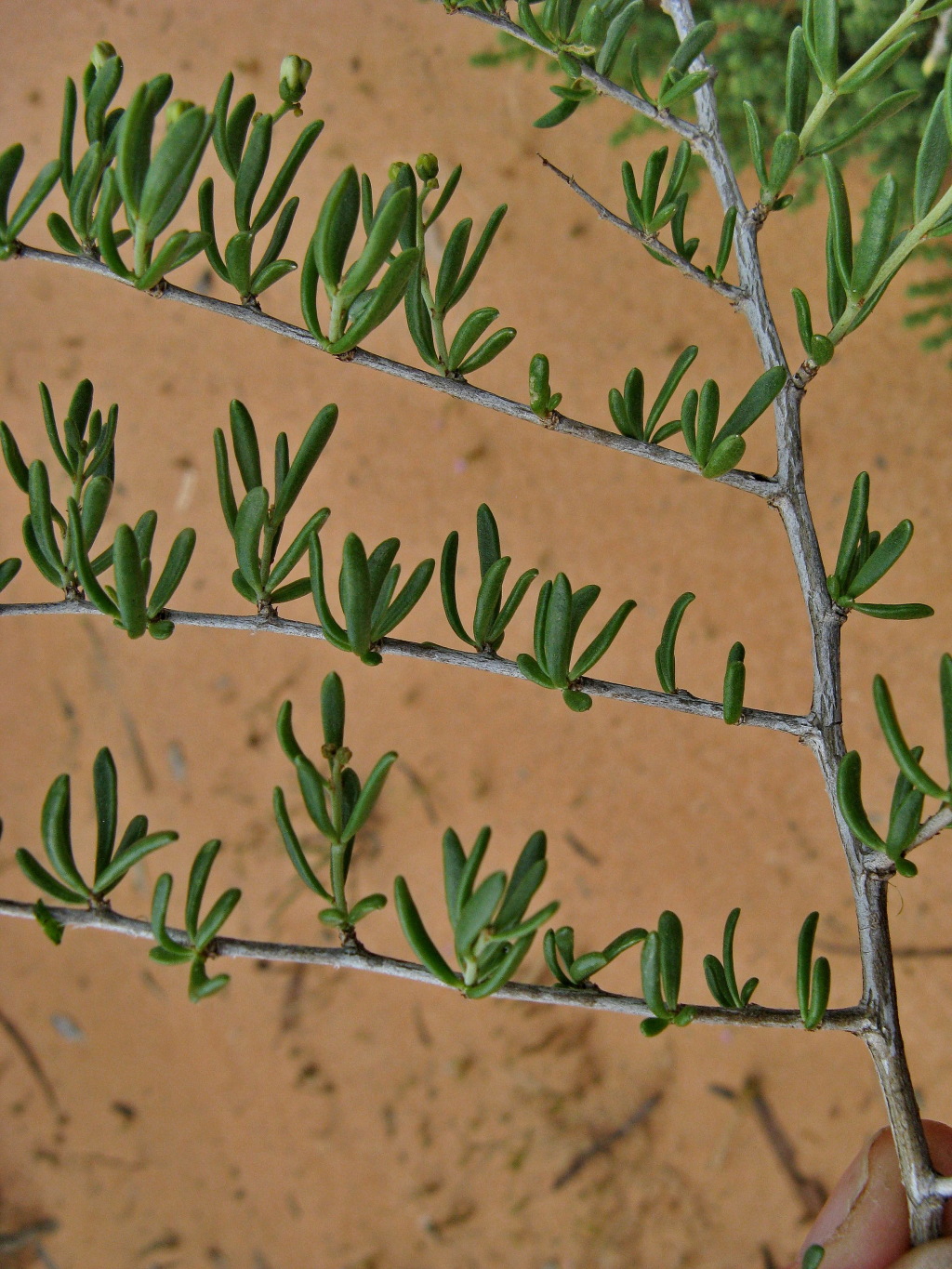Nitraria billardierei
DC. Nitre-bushRigid, often widely spreading shrub to 2 m high; branchlets appressed-hairy, glabrescent, often tangled and spiny. Leaves sessile, alternate or often clustered, oblong-cuneate, 5–40 mm long, 1–5 mm wide, apex acute, both surfaces appressed-hairy, glaucous or green. Sepals 5, ovate, 1–2.5 mm long, fused in lower half, pubescent; petals 5(–6), obovate, 2–4 mm long, apex pouched and rounded, white. Drupe ovoid-oblong, 10–20 mm long, purple, red or golden when ripe, edible. Flowers mostly Sep.–Dec.
LoM, MuM, Wim, GleP, Brid, VVP, VRiv, MSB, RobP, MuF. All mainland states. In Victoria, largely confined to the north-west, where locally common on saline flats and floodplains on clay or gypseous soils, but also with isolated occurrences on limestone cliffs near Portland.
Jeanes, J.A. (1999). Zygophyllaceae. In: Walsh, N.G.; Entwisle, T.J., Flora of Victoria Vol. 4, Cornaceae to Asteraceae, pp. 198–207. Inkata Press, Melbourne.
 Spinning
Spinning



